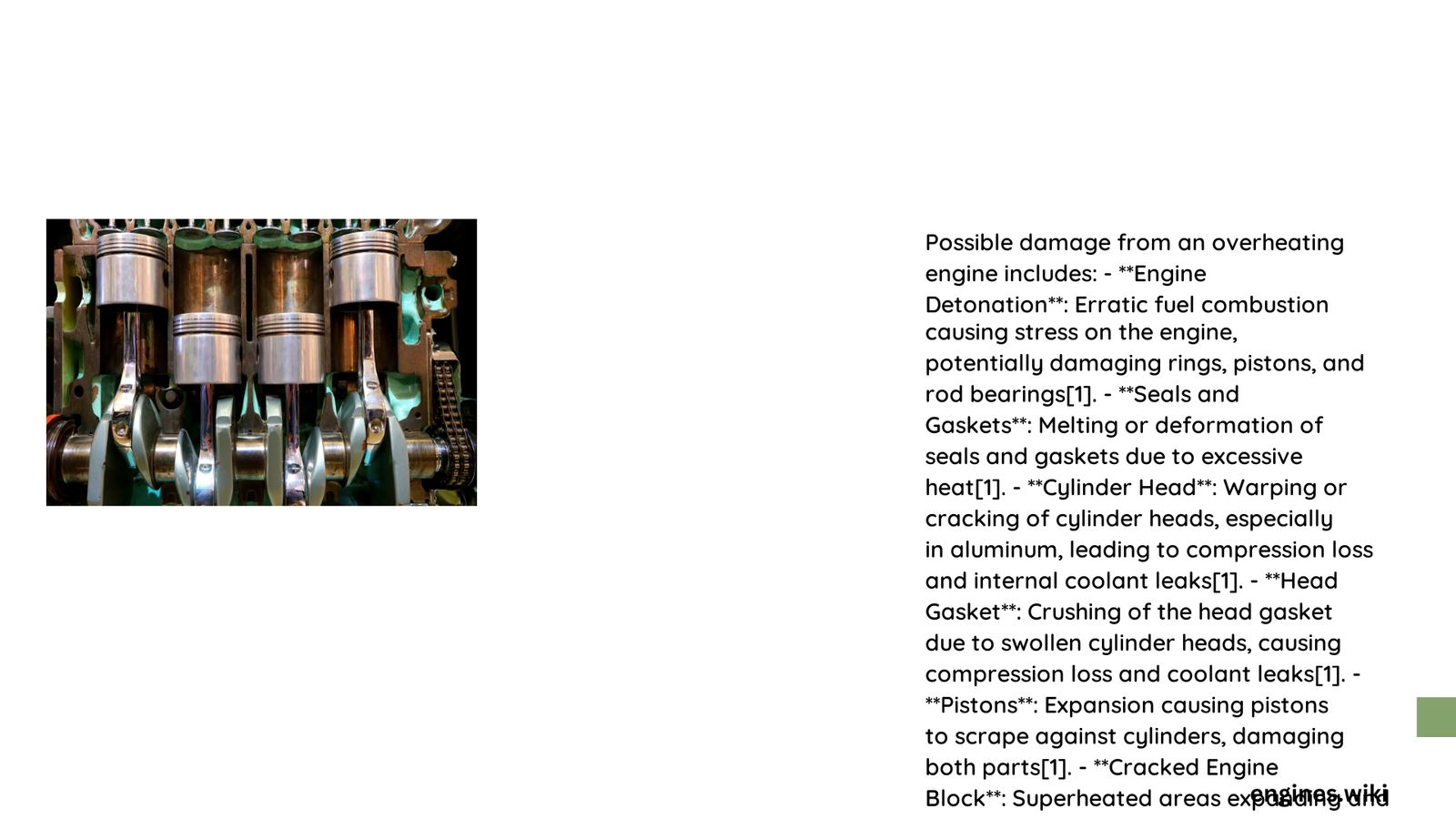Possible Damage from Overheating Engine: A Comprehensive Technical Breakdown
When an engine experiences excessive temperature escalation, it triggers a cascading sequence of potential mechanical failures that can compromise vehicle integrity, performance, and operational longevity. Overheating transforms a precision-engineered mechanical system into a vulnerable environment where metal components expand beyond design tolerances, creating catastrophic risks of structural deformation, material stress, and comprehensive system breakdown.
What Structural Components Face Immediate Risk?
Overheating engines expose multiple critical components to potential damage:
Cylinder Head Vulnerability
- Thermal Expansion Risks
- Aluminum heads expand faster than cast iron
- Potential warping beyond acceptable tolerances
- Compression surface integrity compromised
Gasket and Seal Degradation
| Component | Potential Damage | Repair Complexity |
|---|---|---|
| Head Gasket | Complete failure | High |
| Valve Seals | Material deformation | Moderate |
| Coolant Seals | Structural breakdown | Low-Moderate |
How Do Pistons Respond to Extreme Temperatures?
Pistons experience critical stress during overheating:
– Thermal expansion beyond design specifications
– Potential scoring of cylinder walls
– Compromised ring seal functionality
– Increased friction and mechanical wear
What Mechanical Systems Suffer Collateral Damage?
- Cooling System Components
- Radiator potential rupture
- Hose material degradation
-
Water pump seal failure
-
Lubrication System Impact
- Oil viscosity breakdown
- Reduced lubricant effectiveness
- Accelerated bearing wear
Can Engine Block Sustain Permanent Damage?
Critical risks include:
– Micro-fracture development
– Potential complete structural cracking
– Coolant passage blockage
– Compression loss
What Are Financial Implications of Engine Overheating?
Estimated Repair Cost Ranges:
– Minor Repairs: $500 – $1,500
– Moderate Damage: $1,500 – $4,000
– Complete Engine Replacement: $4,000 – $8,000
Preventative Maintenance Strategies
Recommended Actions:
– Regular coolant system inspection
– Maintain proper coolant levels
– Monitor temperature gauges
– Address warning indicators immediately
– Schedule routine cooling system maintenance
Technical Diagnostic Indicators
Warning Signs of Potential Damage:
– Persistent temperature fluctuations
– Steam from engine compartment
– Unusual metallic knocking sounds
– Visible coolant leakage
– Reduced engine performance
Conclusion
Engine overheating represents a complex mechanical failure scenario requiring immediate professional intervention. Understanding potential damage mechanisms enables proactive maintenance and potentially prevents catastrophic system failure.

